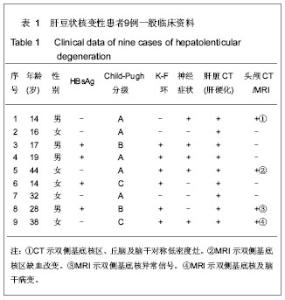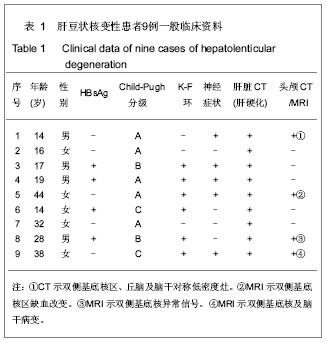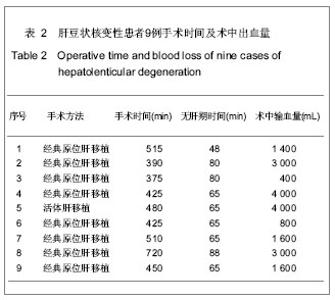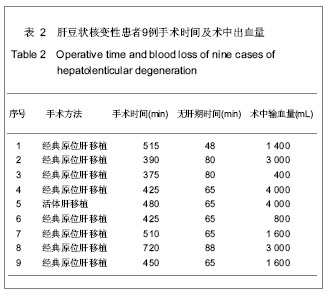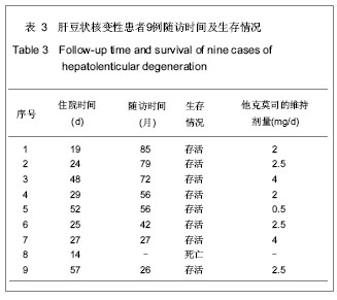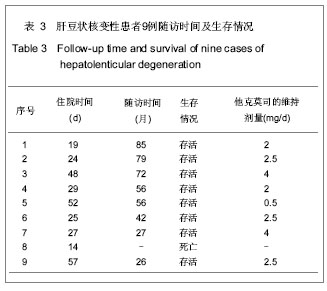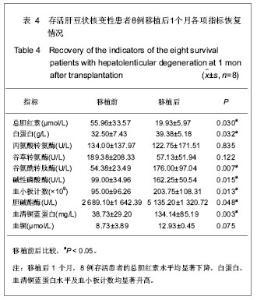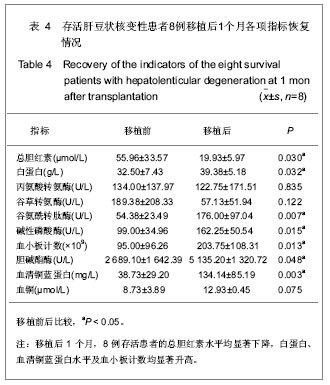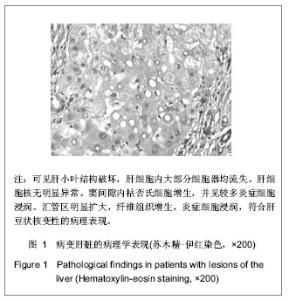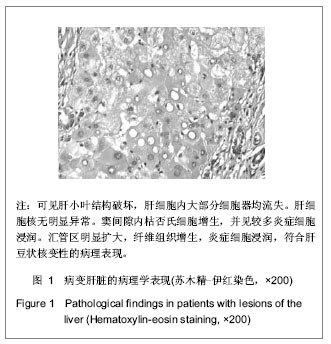| [1] Dhawan A, Ferenci P, Geubel A,et al. Genes and metals: a deadly combination. Acta Gastroenterol Belg. 2005;68(1): 26-32.[2] Ala A, Walker AP, Ashkan K,et al.Wilson's disease.Lancet. 2007;369(9559):397-408.[3] Yin RH,Qu YD,Lin S. Guoji Xiaohuabing Zazhi. 2007;27(4): 275-277.阴瑞红,曲云东,林森.移植治疗肝豆状核变性的临床和研究进展[J].国际消化病杂志,2007,27(4):275-277.[4] Geissler I, Heinemann K, Rohm S, et al. Liver transplantation for hepatic and neurological Wilson's disease.Transplant Proc. 2003;35(4):1445-1446.[5] Sutcliffe RP, Maguire DD, Muiesan P,et al. Liver transplantation for Wilson's disease: long-term results and quality-of-life assessment.Transplantation. 2003;75(7):1003-1006.[6] Schilsky ML.Wilson disease: genetic basis of copper toxicity and natural history.Semin Liver Dis. 1996;16(1):83-95.[7] Yao GB. Shanghai:Shanghai Science & Technology Press. 2004:590.姚光弼.肝豆状核变性\\见:姚光弼,主编.临床肝脏病学[M].上海:上海科学技术出版社,2004:590.[8] Bellary S, Hassanein T, Van Thiel DH. Liver transplantation for Wilson's disease. J Hepatol. 1995;23(4):373-381.[9] Jiang B,Wang QY,Xie YC,et al. Shandong Yiyao. 2010; 50(4):112-114.姜彬,王倩怡,谢琰臣,等.肝豆状核变性的治疗进展[J].山东医药, 2010,50(4):112-114.[10] Fu BS,Zhang T,Li H,et al. Qiguan Yizhi. 2011; 2(2):64-67.傅斌生,张彤,李华,等. 肝移植治疗肝豆状核变性的单中心疗效分析[J]. 器官移植, 2011, 2(2):64-67.[11] Schumacher G, Platz KP, Mueller AR,et al. Liver transplantation in neurologic Wilson's disease.Transplant Proc. 2001;33(1-2):1518-1519.[12] Shao Z,Yang GS,Yang N,et al. Zhongguo Linchuang Yixue. 2007;14(3):339-341.邵卓,杨广顺,杨宁,等.肝移植治疗Wilson病5例分析[J].中国临床医学,2007,14(3):339-341.[13] Xing TH,Peng ZH,Chen GQ,et al. Zhonghua Xiaohua Zazhi. 2007;27(8):551.邢同海,彭志海,陈国庆,等.肝移植治疗肝豆状核变性七例[J].中华消化杂志,2007,27(8):551.[14] Sima H,Cai WK,Shao Z,et al. Shanghai Yixue. 2011;34(9): 656-659.司马辉,蔡文科,邵卓,等.肝移植治疗Wilson病8例分析[J].上海医学,2011,34(9):656-659.[15] Eghtesad B, Nezakatgoo N, Geraci LC,et al. Liver transplantation for Wilson's disease: a single-center experience.Liver Transpl Surg. 1999;5(6):467-474.[16] Cheng F, Li GQ, Zhang F,et al.Outcomes of living-related liver transplantation for Wilson's disease: a single-center experience in China.Transplantation. 2009;87(5):751-757.[17] Medici V, Mirante VG, Fassati LR,et al.Liver transplantation for Wilson's disease: The burden of neurological and psychiatric disorders. Liver Transpl. 2005;11(9):1056-1063.[18] Pabón V, Dumortier J, Gincul R, et al. Long-term results of liver transplantation for Wilson's disease.Gastroenterol Clin Biol. 2008;32(4):378-381. |
